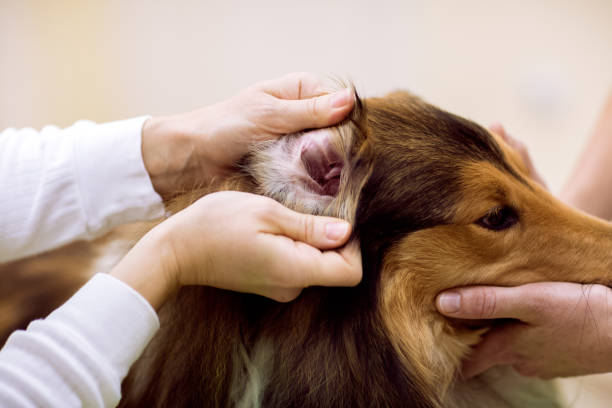Contents
Table of Contents
- Introduction
- Common Eye Conditions in Pets
- Common Ear Conditions in Pets
- Preventive Measures
- Conclusion
Pet owners understand the importance of keeping their furry friends safe and healthy, but one area that can easily be overlooked is the health of a pet’s eyes and ears. These sensitive organs play a vital role in their ability to interact with the world. Detecting and responding to problems quickly ensures pets live happy, comfortable lives. Early intervention is significant for issues such as dog eye infection, which can escalate quickly without proper care. Knowing the symptoms and proper preventive measures can make all the difference.
Eye and ear conditions can cause long-lasting vision and hearing loss in pets. Preventive care is crucial, and early treatment is essential. Regular checks for discharge, redness, or swelling can help identify issues early. Partnering with a veterinarian ensures specialized interventions when needed. Being proactive is key for both young and senior pets.
Common Eye Conditions in Pets
Conjunctivitis
Often referred to as “pink eye,” conjunctivitis involves inflammation of the conjunctiva, the membrane covering the surface of a pet’s eye. Notable symptoms include redness, eye discharge, and visible irritation, such as frequent blinking or pawing at the eye. Common causes include bacterial or viral infections, allergies, and environmental irritants like dust or shampoo. Effective treatment usually involves antibiotic or anti-inflammatory drops and keeping the area clean and free from irritants.
Keratoconjunctivitis Sicca (Dry Eye)
Dry eye, also known as keratoconjunctivitis sicca, results from reduced tear production, causing the eye to become dry, inflamed, and more susceptible to infection. You may notice thick yellowish discharge, persistent redness, or frequent eye rubbing. Causes include autoimmune disorders, certain systemic illnesses, or prolonged use of certain medications. Treatment often features artificial tear drops or immune-modulating medications to stimulate tear production. Proper management can significantly enhance your pet’s comfort and help prevent further complications.
Cataracts
Cataracts develop when the lens of the eye becomes cloudy or opaque, resulting in blurry vision and, if left untreated, potentially leading to blindness. Aging is the most common cause, although diabetes and genetic predisposition play roles as well. Early symptoms may be difficult to notice, but a bluish-gray tint in the eye or behavioral changes, such as bumping into objects, may be signs. Surgery is the most effective treatment, restoring vision in many cases. Prompt diagnosis is essential to avoid permanent sight loss.
Glaucoma
Glaucoma occurs when increased pressure inside the eye damages the optic nerve, causing pain and potentially irreversible blindness. Warning signs include watery eyes, an enlarged eyeball, and severe discomfort, usually exhibited by pawing at the face or squinting. Immediate veterinary attention is crucial, as the condition can progress rapidly. Treatment may include medications to lower pressure and, in severe cases, surgical intervention. For more insights, see the ASPCA’s resource on common dog diseases.
Common Ear Conditions in Pets
Ear Infections
One of the most frequent problems in pets, ear infections can be triggered by bacteria, yeast, or even excessive moisture. Dogs with floppy ears or those prone to swimming are particularly at risk. Key symptoms include persistent scratching, head shaking, and foul-smelling discharge. Treatment requires professional ear cleaning and prescription medications to reduce infection and inflammation. Consistent ear hygiene is crucial for prevention.
Aural Hematoma
An aural hematoma forms when blood collects in the ear flap, typically resulting from intense scratching or violent head-shaking. The ear appears swollen, warm, and may feel squishy to the touch. Resolving the hematoma typically involves a minor surgical procedure to drain the blood, followed by treating the underlying irritation or infection to prevent recurrence.
Ear Mites
Ear mites are microscopic parasites that thrive in the warm, dark environment of your pet’s ears. They cause intense discomfort, leading to frequent head shaking, vigorous scratching, and a crumbly, coffee-ground-like discharge. Infections can spread between pets, making early treatment essential. Veterinary-prescribed topical medications and thorough cleaning can quickly eradicate mites, relieving your pet’s discomfort.
Preventive Measures
- Regularly examine your pet’s eyes and ears for any changes, such as redness, discharge, swelling, or an unusual odor.
- After swimming or baths, gently dry your pet’s ears to minimize moisture buildup and prevent infections.
- Schedule regular veterinary check-ups to detect eye and ear problems early, especially for breeds prone to specific conditions.
- Keep living environments clean and free from dust, pollen, and potential irritants to reduce the risk of allergies and infections.
Conclusion
Maintaining your pet’s eye and ear health is a vital part of responsible pet ownership. By knowing the risks, watching for early warning signs, and taking timely preventive actions, you can avoid many common problems and ensure your pet enjoys a happy, comfortable life. Establishing good habits and building a strong veterinary partnership not only strengthens your bond with your pet but protects their quality of life for years to come.




